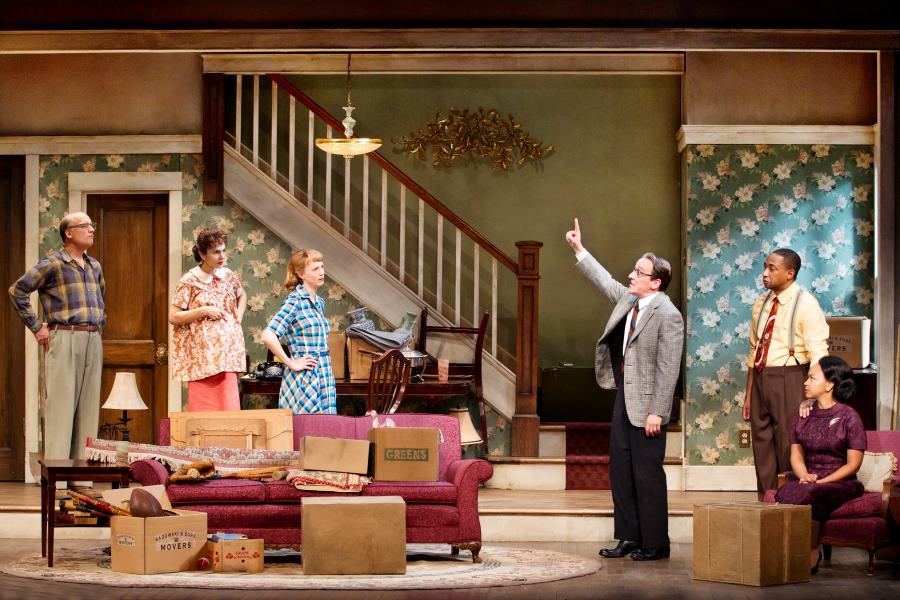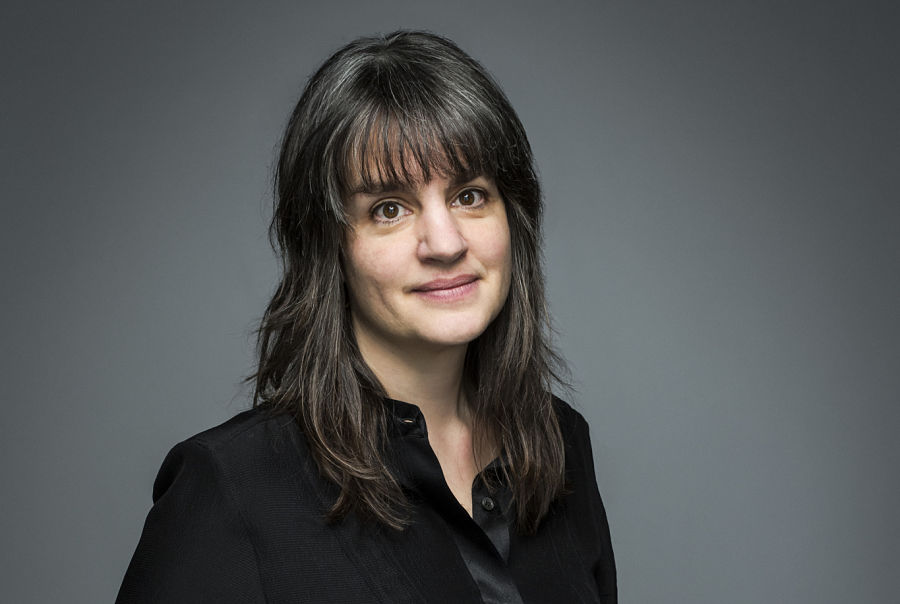SAN FRANCISCO: The great Bay Area turnover has begun, with the announcement that Pam MacKinnon will succeed Carey Perloff as the artistic director of American Conservatory Theater, its city’s preeminent theatre company and its largest theatre training institution. Now in its 53rd year, ACT has an annual budget of $23 million.
Perloff, only ACT’s third A.D. after the successive tenures of cofounders Wiliam Ball and Ed Hastings, served in that role for 25 years. MacKinnon will take the reins in July, and is already co-planning the 2018-19 season with Perloff. Meanwhile, across town at Berkeley Repertory Theater, longtime leader Tony Taccone is stepping down at the end of next season, and in Palo Alto, TheatreWorks A.D. Robert Kelley will leave that post in 2020.
MacKinnon, a freelance director who won a Tony for her revelatory revival of Who’s Afraid of Virginia Woolf? in 2013, may be most closely associated with the works of Edward Albee and Bruce Norris. She has directed widely in regional theatre as well as on Broadway, where her credits also include Clybourne Park, Amelie, and the currently running The Parisian Woman. She’s also long served on the board of Clubbed Thumb, a small, path-breaking New York City theatre company with a focus on new works and new writers, and is the current president of the Stage Directors and Choreographers Society.
She seems an inspired choice to follow Perloff, whose tastes may be more trans-Atlantic than her successor’s but who shares with MacKinnon an affinity for smart, sinewy drama. I spoke with MacKinnon today about her freelance career and her new position.

ROB WEINERT-KENDT: Congratulations, Pam. How did this come about?
PAM MACKINNON: I have certainly thought about artistic directorship over the years. I’ve had this great Broadway chapter that I had to explore and see through, and which continues to be very exciting. Then last July I got a call from a headhunter, the way this sort of thing happens, and they said it was about ACT. I was like, I should really think about this one. I read what the search committee had written, and it was all about potential—about interlocking the Geary Theater with the company’s new space, the Strand, as well as their education program, their community; there was talk about citizen artists. And I thought, I want to have a conversation with these people. And it just became more and more interesting.
So there was a sort of mutual wooing.
And mutual interrogating—it was a healthy process. With each step, I was gauging my own investment and they were gauging me. I know there are a lot of theatres changing leadership right now, but this is the only one I threw my hat in the ring for. I don’t need to be an artistic director, but I want to be the artistic director of ACT.
What was it that sold you?
It was really just the chemistry and ease of the conversation. It was certainly a rigorous process with the trustees and the staff who were on the search committee. But their passion was infectious. They talked about being interested in change, while building on the foundation that Carey Perloff built. Carey’s not a founder, but she was here for 25 years. And with the new space, the Strand, it felt that something inherently new is happening here.
I remember talking to you years ago about how intense a freelance directing career could be once it got going.
In the five years leading up to my Broadway work, I had a crazy calendar, directing Off-Broadway and regionally. There was one season where I directed 7 shows in a 12-month period. And there was a season where I directed Virginia Woolf at Steppenwolf [in Chicago], and four days later went into rehearsal for Death of a Salesman at the Old Globe [in San Diego, Calif.], and then immediately went to D.C. to put Woolf in at Arena Stage. That was great and exhilarating; I’m not sure I’ll do something like that again. But I certainly don’t see taking this artistic directorship as a step down in workload. It will just be different.
What are some of the biggest challenges you foresee?
Certainly there’s some heavy lifting. Programming is always hard. It’s a five-show subscription package, that’s a lot; and the MFA program needs the space sometimes. But that kind of balance is true of any theatre.
I’m interested in making the shows on these stages really speak to each other, to be in conversation. I remember I had a great experience as a freelancer—I told the search committee this story—when I was directing Clybourne Park in a pre-Broadway run at the Taper [in Los Angeles] while Center Theatre Group was also producing A Raisin in the Sun at the Kirk Douglas Theatre. And there was a moment somewhere in our short preview process when you could feel the audience being educated. It was a large room, though it was prior to Broadway, and when Karl Lindner is mentioned in Act One, they knew who he was. More of that, please! Now, I don’t think it has to be necessarily about programming Ibsen’s A Doll’s House along with Lucas Hnath’s A Doll’s House Part II, but finding stories that do speak to each other.
Another thing that excites me about having an artistic home is thinking about the audience, as opposed to thinking “an” audience is going to show up—especially on Broadway, that’s not my purview, that’s not my job. But there’s something about theatre that is a conversation, and it’s good to know who the audience is that you’re having a conversation with.
My thumbnail sketch of Carey’s aesthetic vs. yours would be: English and classical vs. the American canon. Is that fair?
Yes, but like actors, freelance directors get typecast. I’ve been typecast as always having a sofa on my sets. That’s not all I want to do. I look forward to the chance to not do just that, and have a home where I can build a body of work. And beyond that, as a producer, an artistic director, to make artistic marriages, and to put a season together where shows speak to each other. I have to say that in Carey’s tenure, she has created an amazing audience that wants to listen to plays. That’s fantastic. That’s the kind of stuff I do as well.
What’s your impression of San Francisco? I know you did Amelie at Berkeley Rep, but have you worked there before?
Years ago I did a show at the Magic, and I did a few workshops at ACT of Itamar Moses’s The Four of Us. So in the early part of my tenure, it’s going to be like a listening tour, where I’ll be learning about what this scene is, who the audiences are.
And how affordable it is.
Oh, I know! It’s really something to live in Manhattan, and then still have sticker shock in another place. It’s actually sort of comparable. But man, it’s a beautiful city. To live with big, awe-inspiring natural beauty 30-40 minutes away, that sounds good too.
As you know, your hiring is part of a field-wide turnover, with 20-plus leadership positions in flux across the U.S. What does the future look like to you?
I’m super-excited for the Bay Area alone, even just Berkeley and ACT. Let’s get talking, let’s work together. Nationally, it’s great. I consider myself as much a Broadway director as a regional director. And how exciting to have this shift happen; it’s good for new plays, good for companies that devise work, good for directors. It’s also really great for the relationship between boards, trustees, and theatres. It really energizes trustees to go through a search; they have to really learn about their organization and commit to its mission. And that’s really good for an arts ecosystem.
Theatre is changing. To know that the programmers and decision makers, the people who develop and commission, are going to be some new people—it’s exciting. I’ve never had an artistic home. So I’m a new person.


